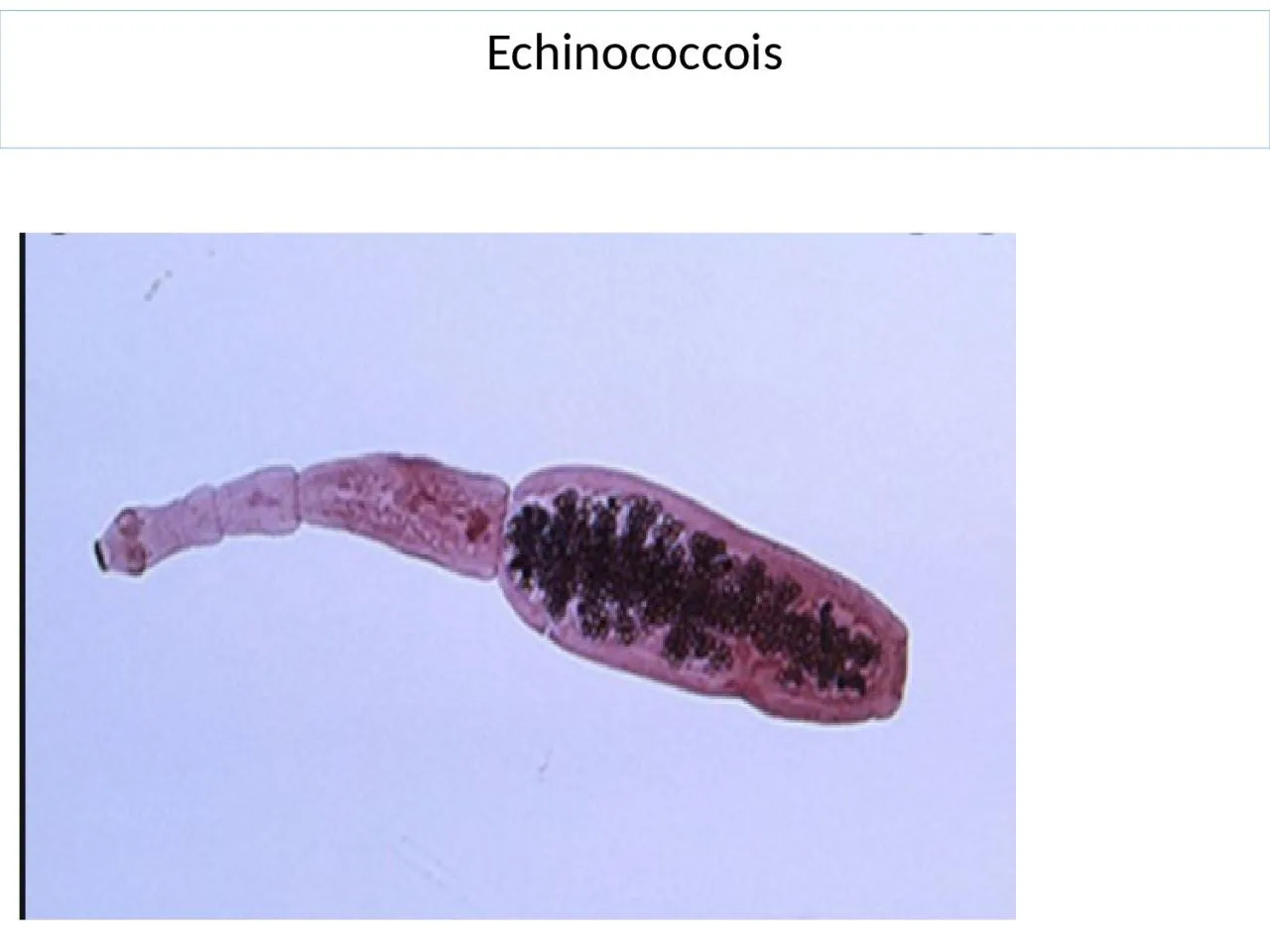PPT-Echinococcois Echinococcois
Author : ximena | Published Date : 2022-06-07
Human echinococcosis is a zoonotic disease a disease that is transmitted to humans from animals that is caused by parasites namely tapeworms of the genus Echinococcus
Presentation Embed Code
Download Presentation
Download Presentation The PPT/PDF document "Echinococcois Echinococcois" is the property of its rightful owner. Permission is granted to download and print the materials on this website for personal, non-commercial use only, and to display it on your personal computer provided you do not modify the materials and that you retain all copyright notices contained in the materials. By downloading content from our website, you accept the terms of this agreement.
Echinococcois Echinococcois: Transcript
Download Rules Of Document
"Echinococcois Echinococcois"The content belongs to its owner. You may download and print it for personal use, without modification, and keep all copyright notices. By downloading, you agree to these terms.
Related Documents

